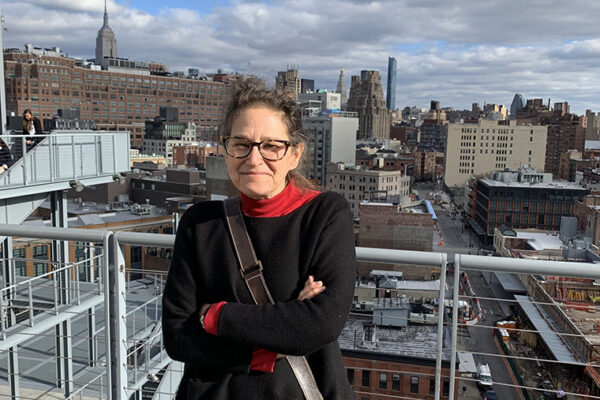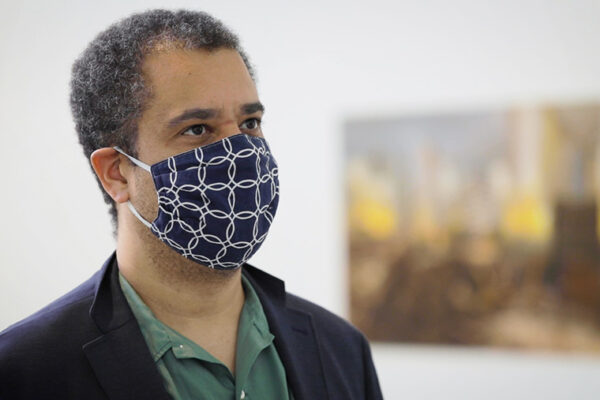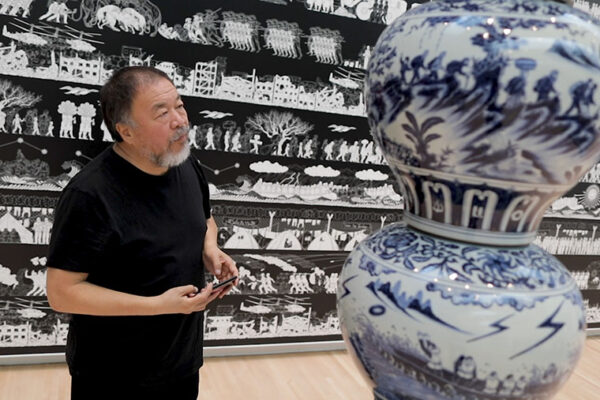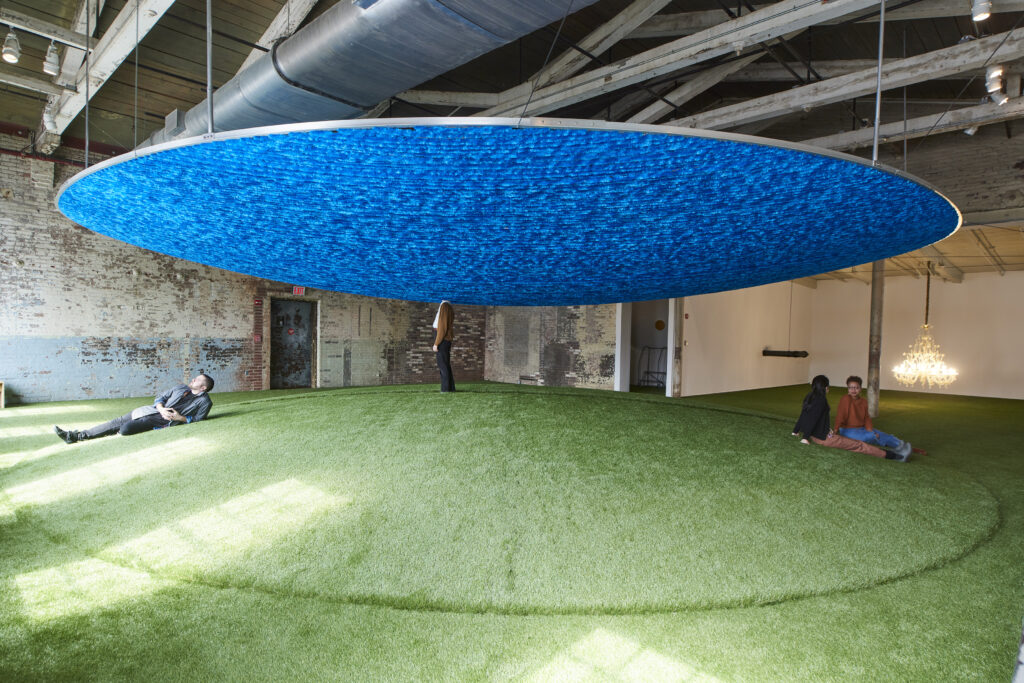
The moon twists inside out. A light shines uncomfortably bright. Earth and sky arc gently toward one another, finally meeting at the body of the viewer.
In “700,000:1 | Terra + Luna + Sol,” Amy Hauft grapples with questions of perception, celestial scale and the space between abstract and experiential knowledge. The vast, three-part installation — the most complex of Hauft’s career — is on view at MASS MoCA in North Adams, Mass., where it remains through January 2023.
In this Q&A, Hauft, director of the College of Art at the Sam Fox School of Design & Visual Arts at Washington University in St. Louis, discusses “700,000:1,” her working process and humanity’s place in a dangerous universe.
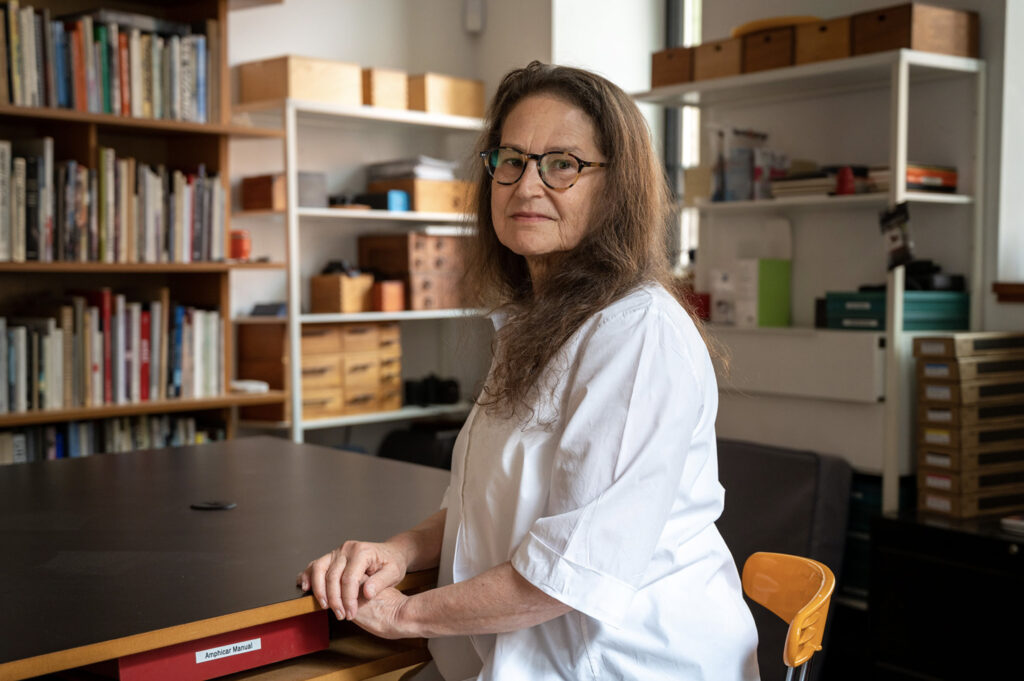
Is this the largest indoor project you’ve done?
It might be. I tend to work very large, but this is certainly the most ambitious. I’ve never made three projects at once before. Each inhabits a separate gallery, though of course they also interrelate.
Can you talk a bit about the title? To what does the ratio refer?
Seven-hundred-thousand to one is the chance of a person on Earth being killed by a meteor strike. Now, that math is skewed for the possibility/likelihood of one big, extinction-level event. But for comparison, the odds of being killed by a shark are around 8 million to one. So the risk from meteors is actually not that remote.
In 2013, a meteor the size of a bus smashed into a frozen lake in Chelyabinsk, Russia. The sonic boom blew out every window in town. I thought: But we already have so many things to worry about!
The ‘Terra’ section builds on a previous installation for the University of Texas at Austin and was created, in part, during your Sculpture Space residency in Utica, N.Y. What do viewers see upon entering the gallery?
Imagine a sphere one mile in diameter. If you slice off the top two feet, you have a “sphere cap” 36 feet across. In the gallery, I built that sphere-cap form as a low, turf-covered hill. I built a mirrored version of that same form to represent the sky. In this case, the form was created by hanging thick blue yarn side-by-side across a circular frame hung from the ceiling. The yarn lengths get shorter as they move away from the center, creating the illusion of an enormous bowl.
When the viewer walks to the top of the grassy hill, their head parts the yarn strands and disappears into the bottom of the bowl. For others in the gallery, their body appears headless. And for the headless viewer, their vision is bounded by the interior of a gigantic blue bowl: their new horizon.
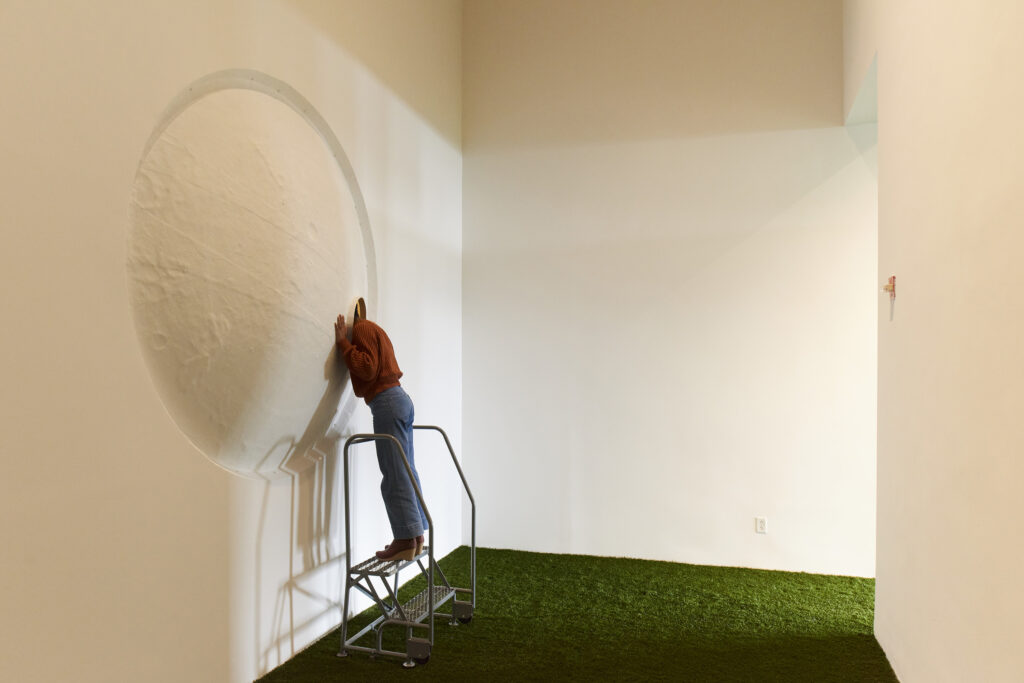
Those are dramatic images — and quite distinct, depending on the viewer’s specific location.
In all my work, there’s a sense of physical encounter. The viewer’s body is experiencing something, telling them something. I think about the difference between what we know as physical beings and what we know as conscious entities. I often attempt to isolate those experiences. Here, the mind/body split is made literal.
I also wanted to be sure there was value for people of all physical abilities — whether or not they climb the hill.
The ‘Luna’ section took some complex fabrication. Can you walk us through that process?
I bought a digital 3D model of the moon, generated by satellite telemetry, from NASA. I shrunk it, inverted the geography (so the exterior craters show up inverted on the interior surface), and divided it up into about 140 pieces – like a giant 15-foot-diameter soccer ball!
With a CNC (computer numerically controlled) router, I milled each unique piece as a foam mold — at the MADE makerspace, here in St. Louis. We then took all the foam molds to MASS MoCA, where I was in residence for three weeks while we cast all the pieces out of Aqua-Resin (a fiberglass resin material). I came back for another month-long residency, during which we assembled the pieces into the 15-foot diameter sphere. It was like the world’s craziest three-dimensional jigsaw puzzle.
In the gallery, most of the moon is hidden behind a floor-to-ceiling wall, except for an 8-feet-diameter sphere cap popping out from the wall. The viewer climbs a short set of utility stairs and ducks their head through a portal into the sphere — and, suddenly, they’re inside the moon.
The inverted moon texture does something weird to your optical perception. The eye wants to see what it knows. But with exterior now made interior, the eye has trouble understanding. The sense of whether you’re looking at something convex or concave sort of flips back and forth.
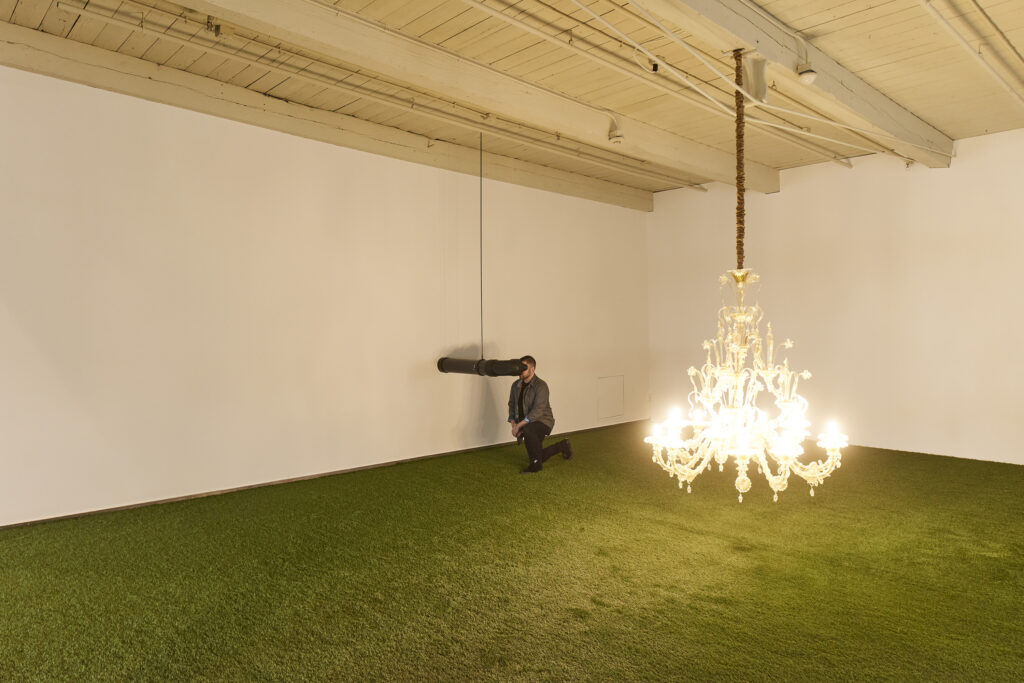
‘Sol’ also plays with the limits of visual perception. Can you describe that piece?
It’s in a smaller gallery, about 1,000 square feet, with an 11-foot ceiling. A Rococo chandelier handmade in clear Venetian glass and gold leaf hangs peculiarly low to the ground. The chandelier is about 5 feet tall, maybe 4 1/2 feet wide, and looks like some unreasonably extravagant flower arrangement. It feels oversized and too detailed for the space.
Instead of the small flickering flame-bulbs this chandelier would normally sport, I’ve installed 15 high-lumen LEDs. It’s all too much to look at it — the over-the-top Baroque details of the chandelier, the way-too-bright lights—you have to shield your eyes from the very thing you are trying to see. The gallery is even a little warm because of the intense light.
This was a complicated installation. Did everything go according to plan, or were their issues to resolve along the way?
First, I want to say that MASS MoCA is unlike any museum I’ve ever encountered. Curator Denise Markonish spends years working with her artists because few artists have made works on the scale of those galleries. The museum also has an incredible, fearless and talented crew who helped me manufacture, install and troubleshoot the work. I mean, I’ve never built a moon before!
While assembling “Luna,” it turned out we’d forgotten to make one of the molds, so I tracked down the digital file, milled a new mold, cast it and slipped it into place. But the biggest snafu was when we realized “Luna” wasn’t going to fit into the gallery we’d originally planned for; the ceiling was too low. I might be the only person in the world who’s made something too big for MASS MoCA! But the room where “Sol” was going had higher ceilings, so we ended up swapping galleries. We lost about a day — far less catastrophic than it felt in the moment.
How do you see viewers engaging with this project? And what would you like them to take away?
I’m hoping that when people — children as well as adults — come in, they’ll be curious but also have an intuitive sense about how to begin seeing and experiencing the project. They’ll know what to do.
I’m interested in creating an awareness in the viewer that we are standing atop the Earth, hurtling through space. Right now! The true physical circumstance of our tiny civilization existing within the universe is both awesome and terrifying. We spend a lot of time trying hard not to know that.
Slideshow
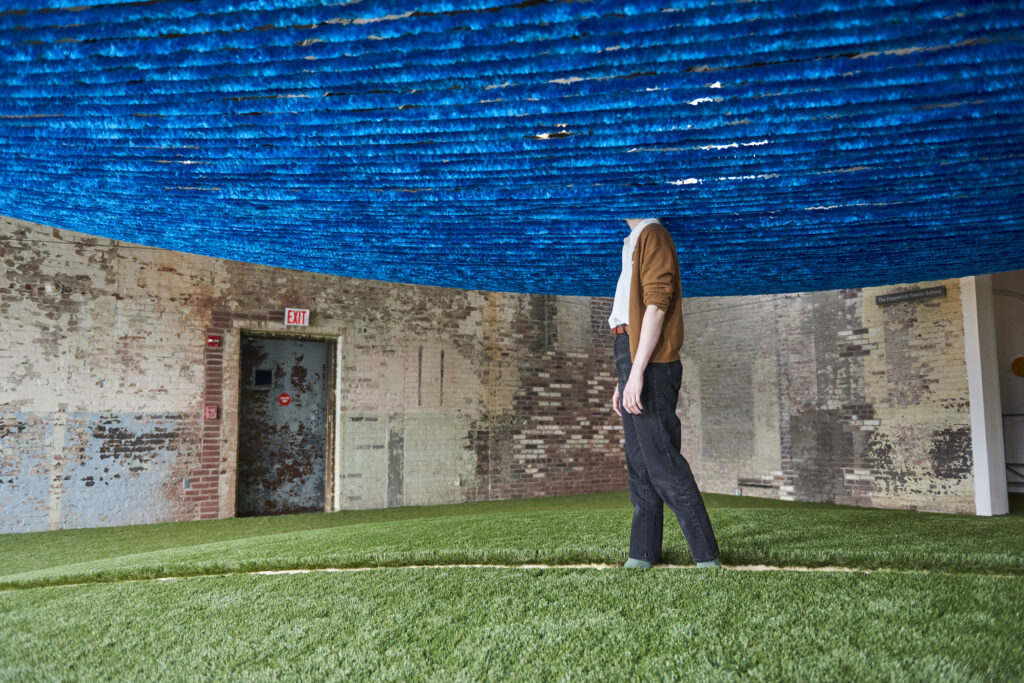
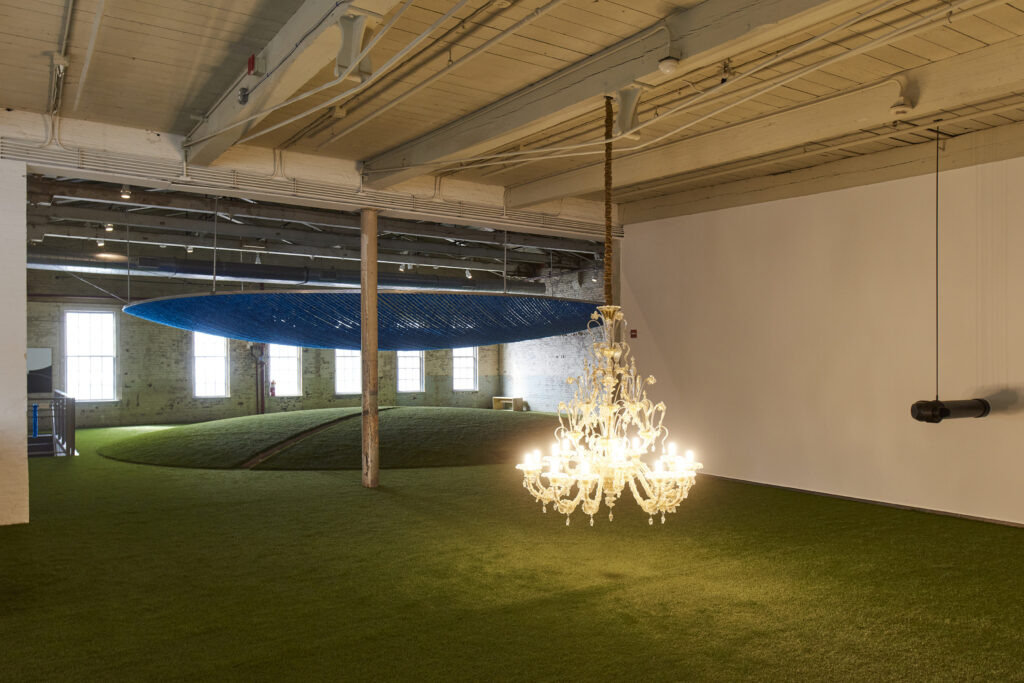
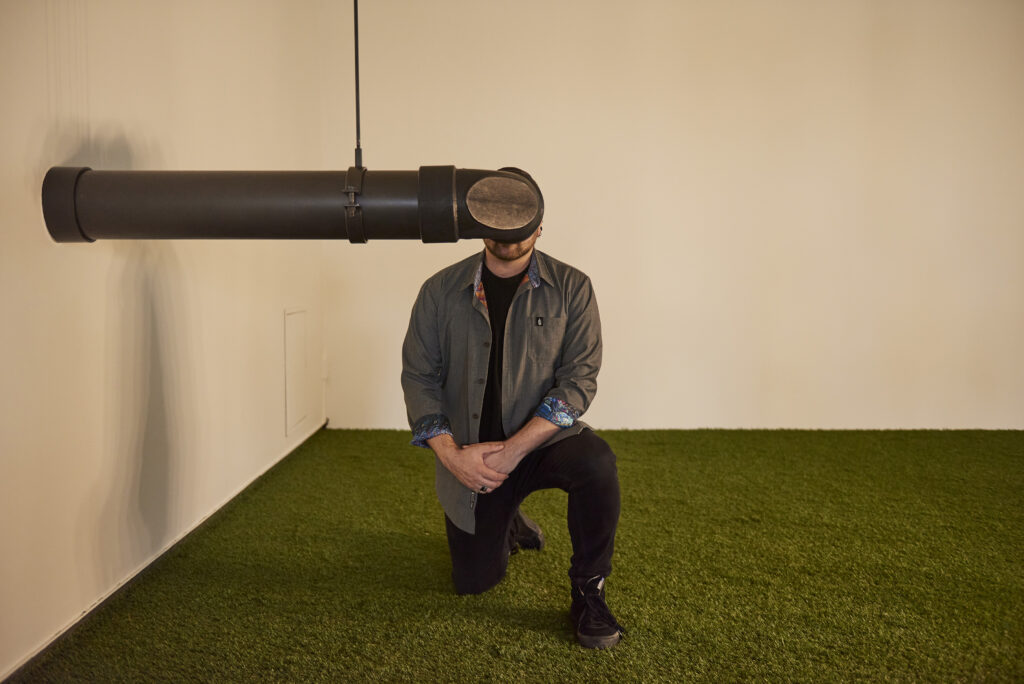
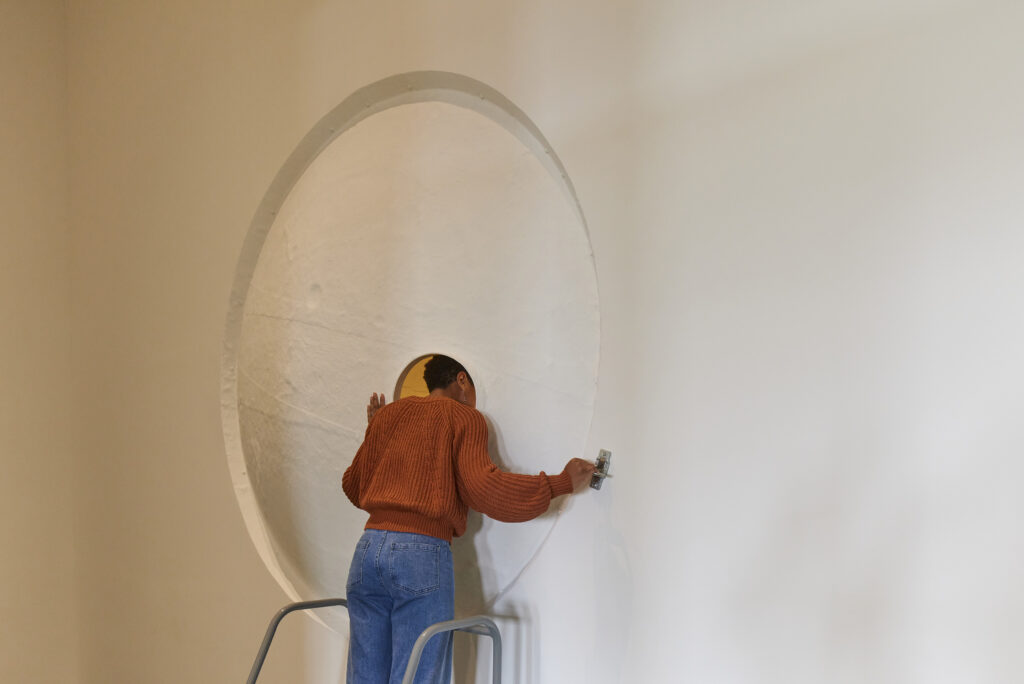
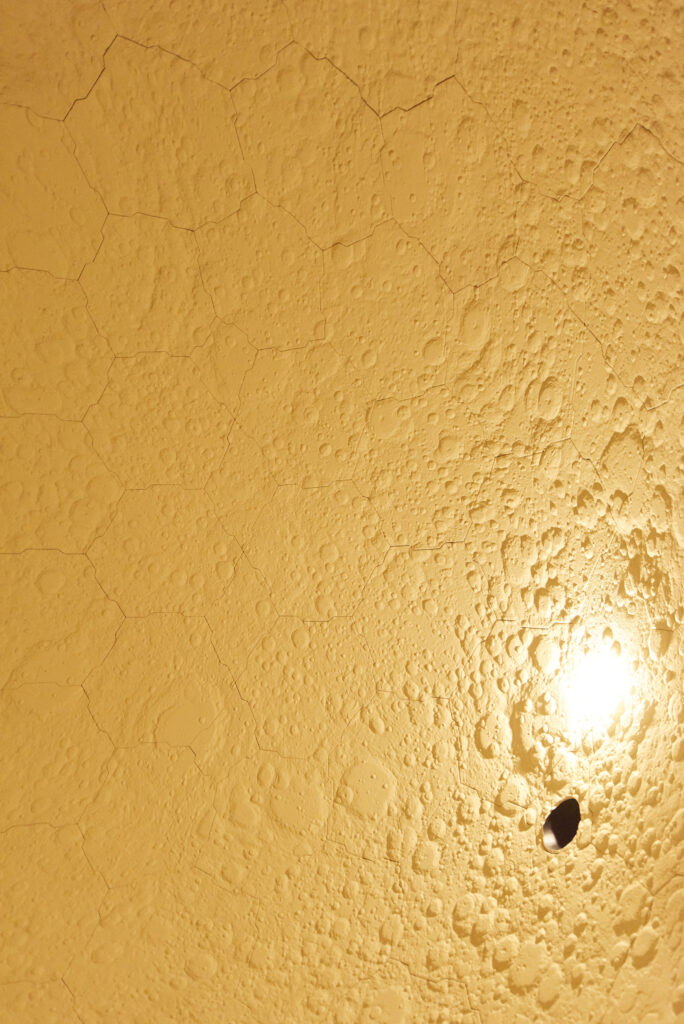
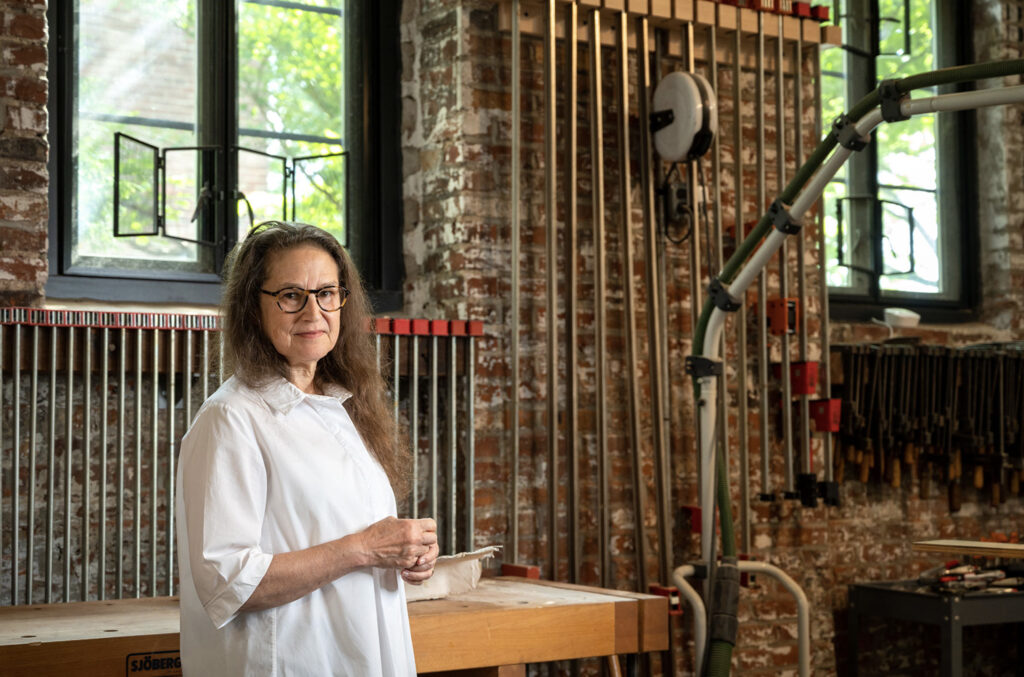
“700,000:1 | Terra + Luna + Sol” remains on view through January 2023 at MASS MoCA in North Adams, Mass. For more information, visit massmoca.org. For more information about Hauft’s work, visit amyhauft.com.
